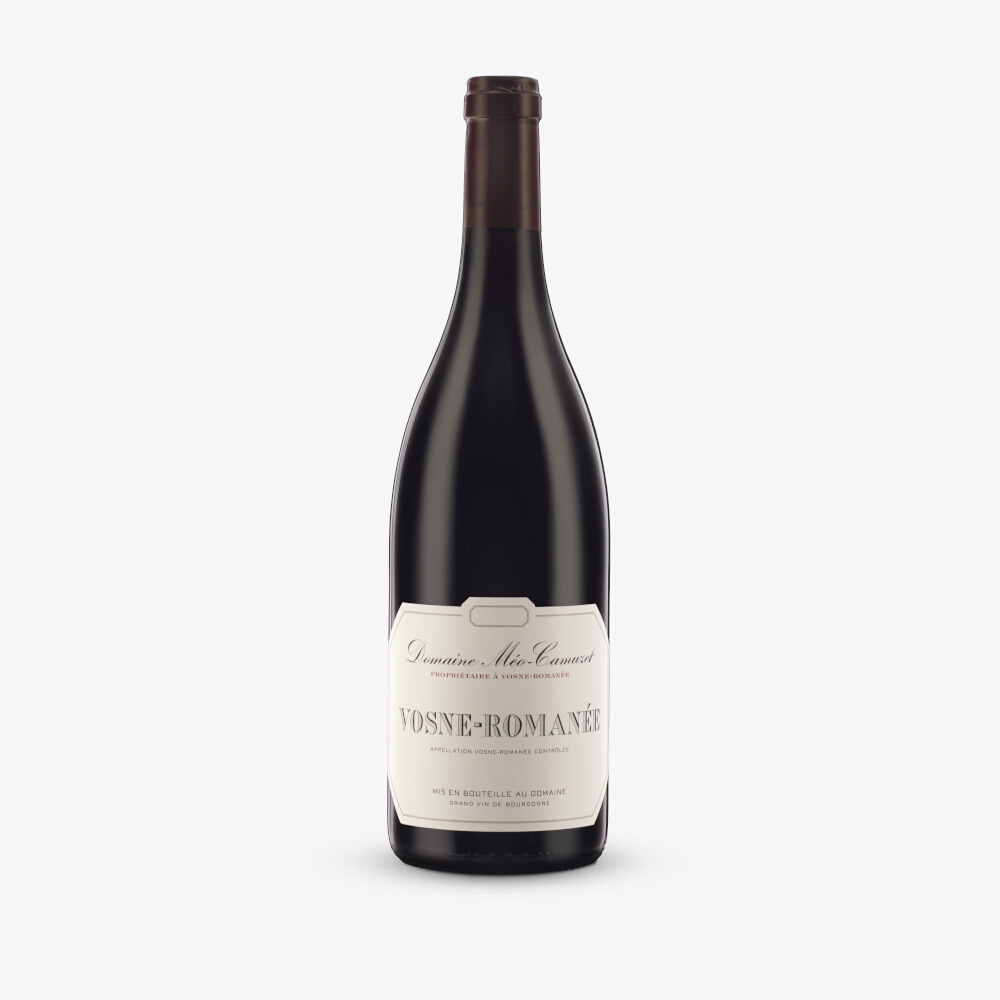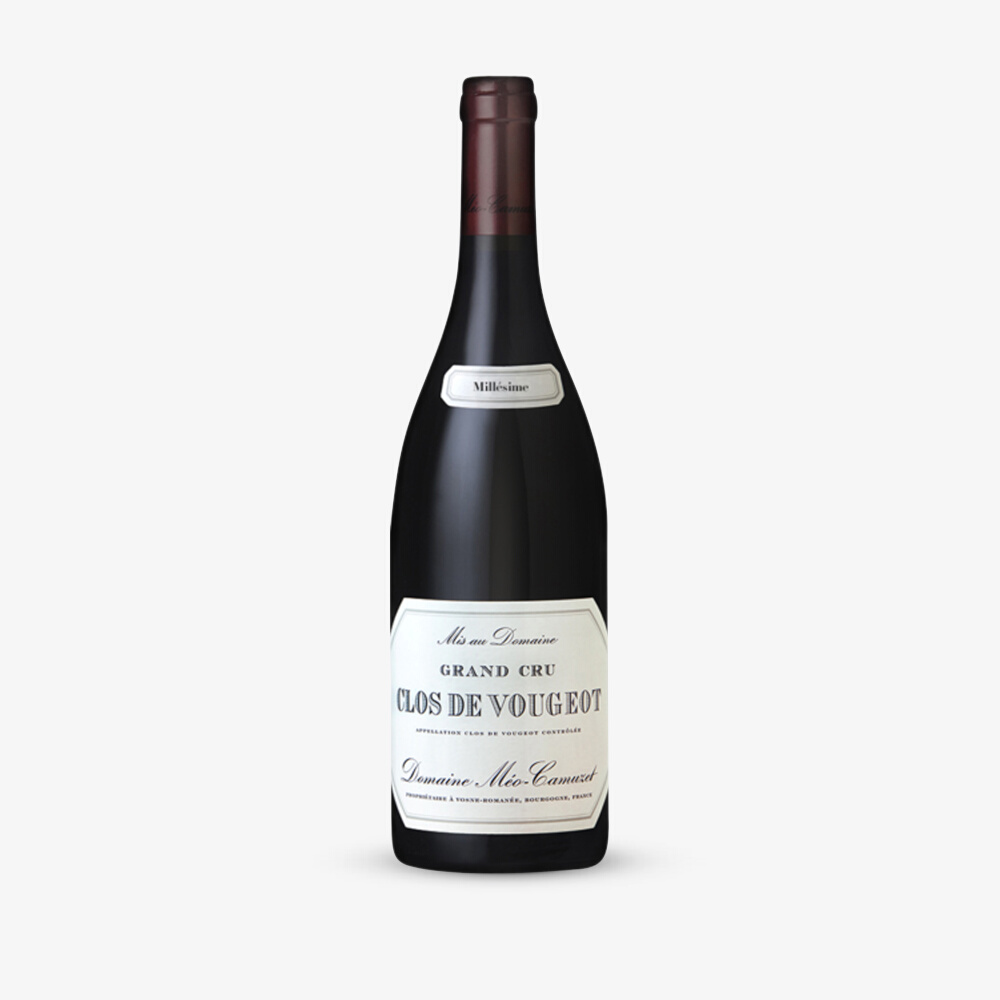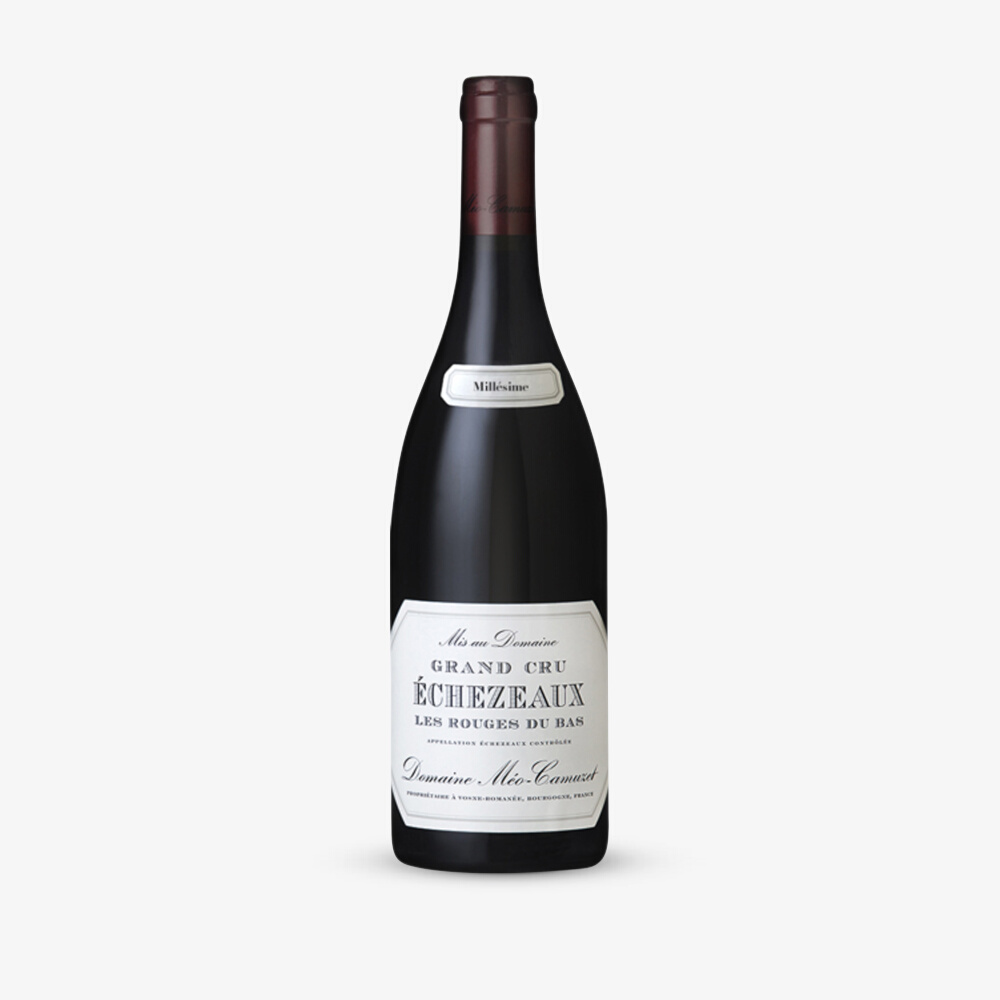
Méo Camuzet
It is incredible to think that up for many years the Domaine was selling its entire production in bulk to négociants. These years of wasted potential were put to rights when the domaine produced its first bottling in 1983 under the guidance of Jean Méo. He was succeeded by his son Jean-Nicolas in 1985 who, by 1988, had taken back plots being leased out elsehwere. Henri Jayer, who had long farmed some of the family's parcels, mentored Jean-Nicolas for several years. Key features of winemaking here are de-stalking of grapes (but where necessary stalks are added back in to fermentations depending on vintage and vineyard) pre-fermentation maceration and ageing in 50-100% new oak depending on the wine. These are intense, deep, silkily-textured Burgundies that demand time.
2017 Vintage
For Jean-Nicolas 2017 is “a really nice vintage that has a bit of everything: it is accessible but fresh and true to terroir and the cru hierarchy. The higher you go up the scale the more complexity you get.” It is technically a lower acid vintage like 2007 but certainly more complex and with a greater sense of energy. Cooling the crop down at harvest and the Domaine’s policy of not racking during élevage has helped to preserve the freshness of the wines. Some very noble wines here that are not short on vitality and transparency of flavour.
2018 Vintage
Winemaker Peer Reiss summarises 2018 as “a very ripe, dense year but with good freshness of fruit.” The domaine certainly did not hesitate to get harvesting when they felt the time was right, which was 29th August in Corton and 4th September in the Côte de Nuits. Méo-Camuzet have struck a fine balance in this vintage, harvesting healthy, fresh, ripe grapes that ranged between 12.9 and 14 degrees of potential alcohol. You can feel just enough of the richness and power of the vintage without it dominating the wines, and you can certainly taste a freshness, health and clarity of fruit that suggests they got the picking date just right. Generous, rich wines punctuated by bright, translucent fruit. Very much in keeping with a more lifted style we have noticed here over the last few vintages.
2019 Vintage
With both negociant grape purchases and domaine-owned fruit to manage, harvest is a logistical challenge every year for Jean-Nicolas Méo and team, particularly as their vineyards stretch from St Romain up to Marsannay via the Hautes Côtes. Everything ripened at the same time, Chardonnay and Pinot Noir, so achieving the quality they did was a pretty extraordinary feat. Harvest began on the hill of Corton and Clos de Vougeot, where sugar levels had reached 14% potential alcohol. The pleasing thing for Jean-Nicolas was the acidity levels, which were high and offset the ripe fruit and alcohol. In his own words he is “enraptured by this vintage,” noting that they have become even more refined and lively during élévage, something he had witnessed with the 2015s. These are dark, silky, seductive Burgundies, that, as rich and glossy as they are, offer nuance nonetheless and portray the vineyards’ characteristics accurately.
2020 Vintage
It feels like there has been some fine-tuning going on at this estate over the last few years, as the wines seem to be getting increasingly vivid and precise. Jean-Nicolas considers 2020 to be “one of the greatest vintages I have made.”; 2020s are a great success, and rank as the finest examples we can ever remember tasting here. Harvest started on the 24th August and lasted 10 days. The grapes arrived in an impeccably healthy state, ranging in potential alcohol from 12.9 to 14.3 degrees and extraordinarily fresh acidities with pHs of 3.35. Jean-Nicolas adds “it is a very good vintage that needs time. They changed and refined a lot in barrel. They are concentrated and structured, my instinct is that these are vins de garde.”
2021 Vintage
The recent move to a more gentle and less marked élevage chez Méo-Camuzet has worked wonders in 2021, a vintage that both demanded it and offered up the perfect grapes to really highlight their flight to finesse. Harvest here started on the 21st of September and paused for one day before finishing on the 29th. Malic acidities were high and careful vinification was required to ensure everything progressed as desired. A slightly longer than normal pre-fermentation maceration, due in part to the cold cellar temperatures, allowed for ample colour extraction, while in the tanks it was just a couple of pump overs a day. At the end of fermentation, while the wines were still warm, a gentle series of punch downs were employed to fill out the middles of the wines. Everything was destemmed. The resulting wines are some of the most elegant, aromatically pure and flowing wines we’ve tasted at this address.
2022 Vintage
Nacha Navarro, Jean-Nicolas’ cellar master, took us through the 2022s with consummate skill and ease given it was 08.30 on a Monday morning when our scheduled appointment began. Jean-Nicolas was on hand for a quick hello, en route to Paris, and his take was indeed surprise at the freshness and tension on display in 2022. After such a warm growing season, malos went through at pace, with the wines then shutting down in April when they might otherwise have expected them to be open. “We have more complexity and structure than we did in the ‘60s, ‘70s, and ‘80s, so such an early malo is no bad thing. We may just decide to do a longer elevage in 2022 if the wines continue to develop well,” Nacha suggested. The move to a more elegant style continues here, with light toast barrels now accounting for up to 80% of the barriques in the cellar - a shift that is undoubtedly detectable in the wines as individual sites become more clearly marked and a newfound sense of elegance pervades the wines. Harvest started Monday 29th August and lasted for 9 days. A highly successful range.
2023 Vintage
Jean-Nicholas Méo’s teams started their harvest on 5th September with Corton Rognet, and had originally planned to pause before leaning into their Côte de Nuits vineyards, but the heat prevented that. “It was a vintage where we had to adapt”, assistant winemaker Nacha Navarra told us. That meant rigorous sorting, a four-to five-day cold soak, less pump-overs during fermentation than usual, cooler fermentation temperatures and a little bit of saignée on the higher yielding plots. All of which helped to preserve freshness in a range of wines that have slightly higher pH than in 2022, with slightly higher degrees of alcohol too. The results are highly successful, with classically stylish Méo Camuzet sensibilities, accessible fruit, soft tannins and open, generous characters.








